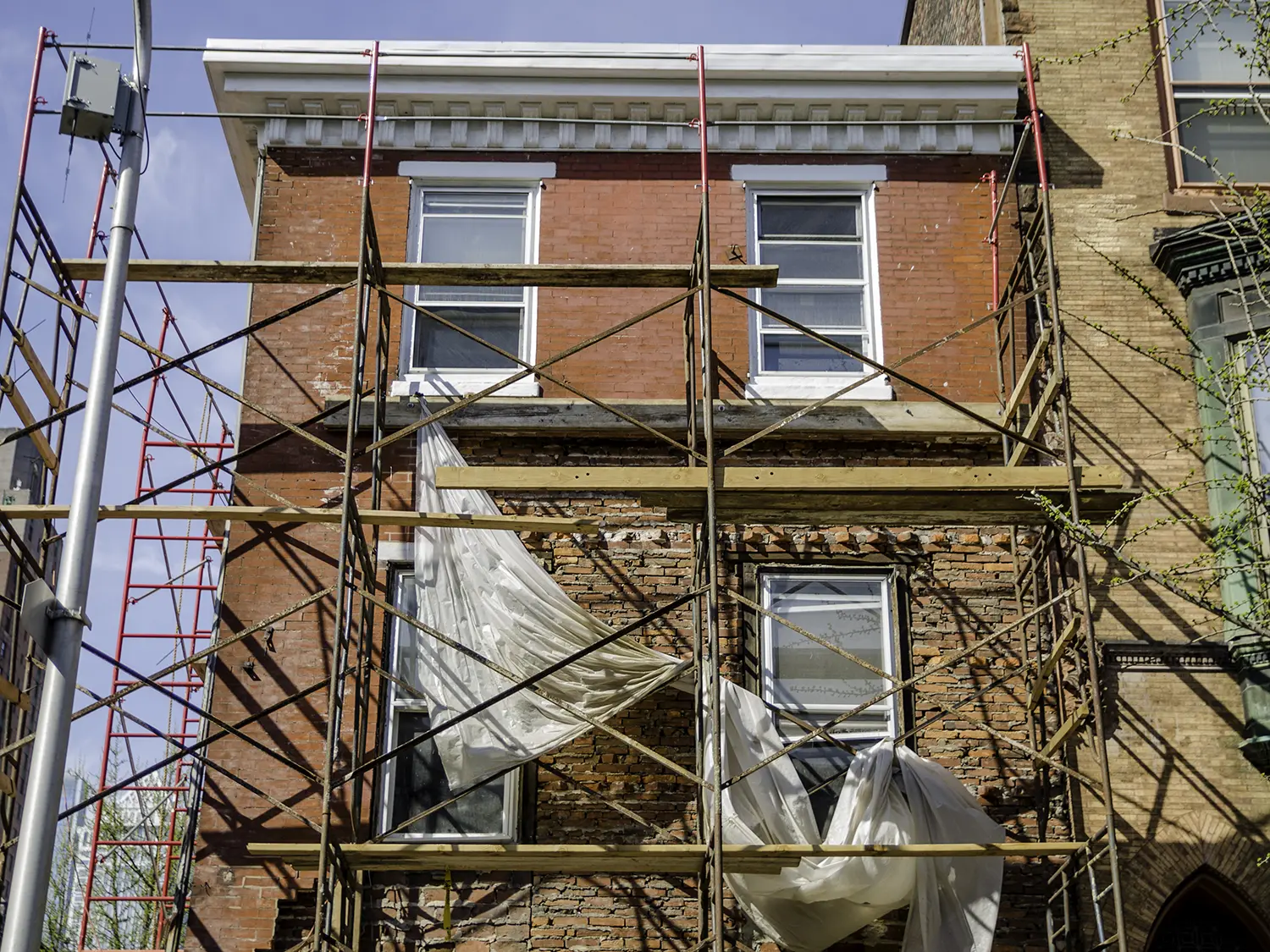When a tornado hit St. Louis last May, many homes were found to have roof, window and siding damage, and many homeowners are still struggling with the unique problem of planning for these repairs. As it turns out, there's more to these types of repairs than just labor and material costs: Scaffolding is an essential (and costly) component to completing these types of projects.
Scaffolding is made of wooden planks and metal rods and provides a stable platform for repair work. More importantly, it allows for easy transfer of materials and tools. For example, scaffolding is essential for masonry repair work: bricks are heavy and are stacked on scaffolding platforms to the height of a project. Scaffolding is also required when fixing roofs with slate or clay tiles, delicate parts that should never be walked on.
Get a weekly dose of home and style inspiration
Subscribe to the St. Louis Design+Home newsletter for the latest stories from the local interior design, fashion and retail scenes.
We will never send spam or annoying emails. You can unsubscribe at any time.
The importance of scaffolding – along with the sheer volume of debris from the May tornado – has caused its price to skyrocket. Therefore, local homeowners are feeling the pinch. Blake Partney, project manager at Atlas Restoration and Allied Roofing, two divisions of the same Missouri-based full-service construction and restoration company, explains, “Scaffolding is like any other building material. It's all about supply and demand.” As supply from local scaffolding dealers decreases, they are forced to order more stock, he says. “And the greater the demand, the higher the price for scaffolding will of course be.”
But after every major storm — including last year's severe hailstorms — the number of jobs requiring construction of scaffolding for roof repairs, window replacements and structural stabilization increases dramatically. This is particularly true in the Midwest and central United States, where tornado damage is common, says Michael Feazel, CEO of Roof Maxx, which has dealers in Missouri. “But the main reason for the rise in scaffolding prices is actually due to supply chain challenges.”
Unfortunately, there are few scaffolding rental companies in St. Louis and homeowners are usually last in line. Contractors are the first to get into the materials, and roofing and restoration companies get even more traction because of the large number of projects they complete on average, says Partney.
Worse still, if you rent scaffolding, you have to rent it by the day. The longer you have it, the more the cost increases. “A 5-by-5 section of scaffolding typically costs about $30 per day,” says Partney. If you're working on a traditional size home, you'll need at least 6 to 8 sections. In addition, scaffolding rental companies charge homeowners fees for erecting and dismantling the scaffolding after the project is completed.
Finally, insurance (or lack thereof) can play a significant role in the cost of scaffolding. Partney points out that for a variety of reasons, insurance companies have been slow to approve estimates for scaffold-based homeowner projects, further delaying project completion. His company works directly with insurance companies and ensures timely approval of their projects.
In the end, it is better if you hire a restoration company to repair your open damage to the roof, siding and windows. If it's just roof repairs, the project can be completed in two to three weeks. However, projects that require vinyl siding and windows may take longer. They typically require an average wait time of four to six weeks from the time they are ordered, says Partney.
